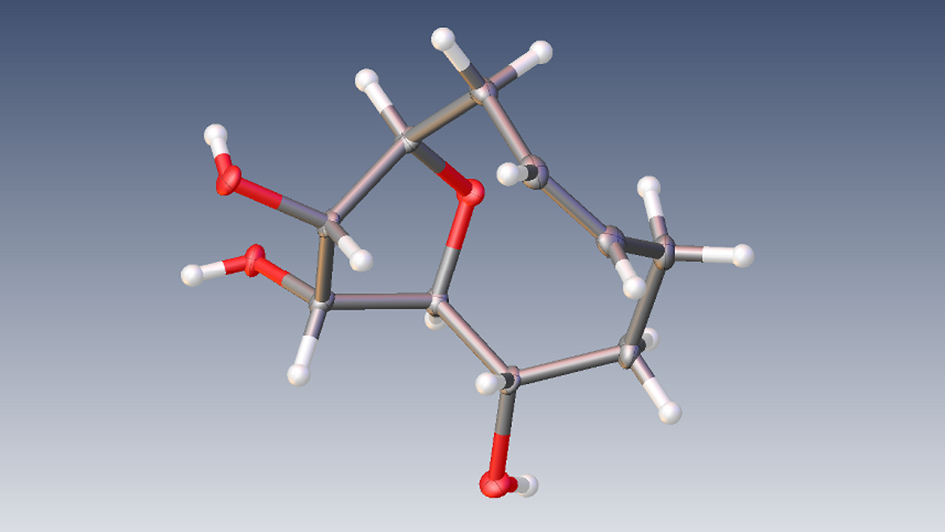
A crystal structure of the basic oxygen-containing ring, showing oxygen (red), carbon (dark grey) and hydrogen (white) atoms. The key oxygen atom sits in the centre of the structure.
Scientists have discovered how to make a synthetic molecule that could be a key building block in the production of future cancer drugs.
The molecule is a complex mixture of carbon, hydrogen and oxygen, including a molecule of oxygen set within a carbon ring.
It is from a class of chemicals called oxygen-containing medium rings, which are common in nature but are difficult to make in the laboratory.
The researchers, from The Institute of Cancer Research, London, believe the molecule will be a useful tool in designing and synthesising new cancer drugs.
'Scaffold'
It could act as a ‘scaffold’ to build on to make molecules with new shapes.
In a painstaking multi-step experiment, published in the European Journal of Organic Chemistry, scientists from the ICR’s Cancer Research UK Cancer Therapeutics Unit overcame several obstacles that generally prevent a medium-sized carbon ring from snapping into place around an oxygen heart, in laboratory conditions.
A key step was overcoming a natural tendency for the chain-like precursors of oxygen-containing rings to bond with nearby metal atoms, and not join together.
The researchers created the right conditions to prevent this by temporarily attaching the precursors to large molecules containing silicon.
Variable shapes
As well as making the basic building block, the researchers also showed how to vary its conformation into a slightly different shape, and to saturate it with hydrogen atoms into a third form. All three versions of the ring could be useful to chemists working in drug discovery.
The study was funded by Wellcome, Cancer Research UK and the ICR.
Study leader Professor Ian Collins, Team Leader in Medicinal Chemistry at the ICR, said: “Medicinal chemists are always looking for new molecules with different shapes, to give us new starting points for the design of anti-cancer drugs.
“This type of molecule is known to have biological activity – it is produced by a diverse range of marine organisms including algae and coral – and our research will make it easier for chemists to make and include these building blocks in future laboratory research."